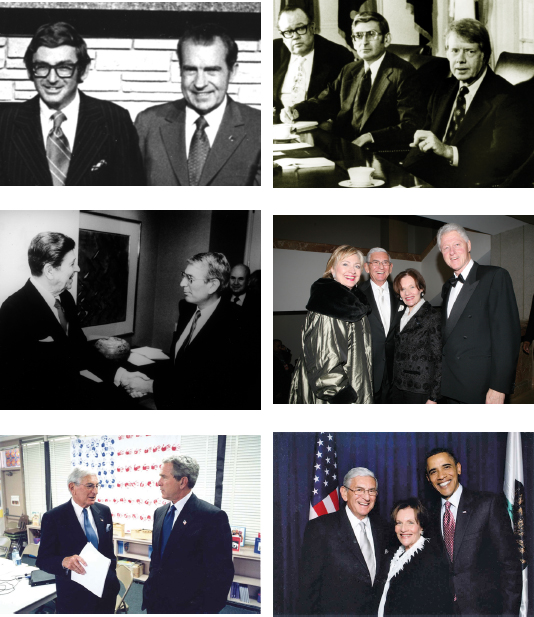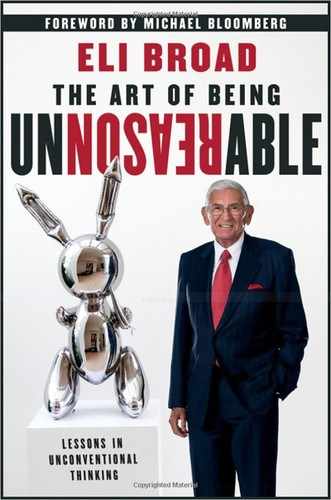Eli Broad’s parents, Rita and Leon Broad, were Lithuanian immigrants who instilled a solid work ethic in their only child. Leon ran a five-and-dime in Detroit, and Rita was a dressmaker.
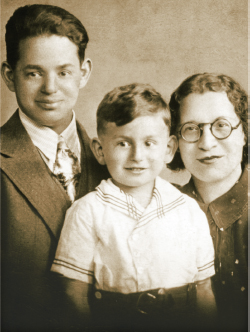
Eli Broad graduated from high school in 1951 and, after graduating from Michigan State University in 1954, would go on to become the youngest certified public accountant in Michigan history.

Eli Broad proposed to Edythe “Edye” Lawson after only a few dates, promising her a comfortable life.
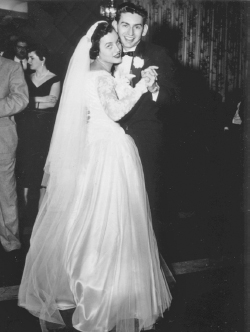
Eli and Edye Broad celebrated their 50th wedding anniversary in 2004. To mark the occasion, Eli underwrote an opera by Los AngelesOperain Edye’shonor, and Plácido Domingo sang at their anniversary party.
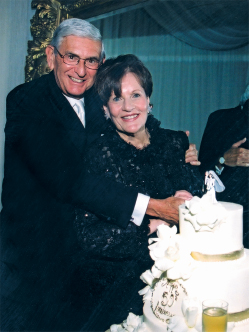
Eli and Edye Broad have two sons, Jeffrey (far right) and Gary (far left).
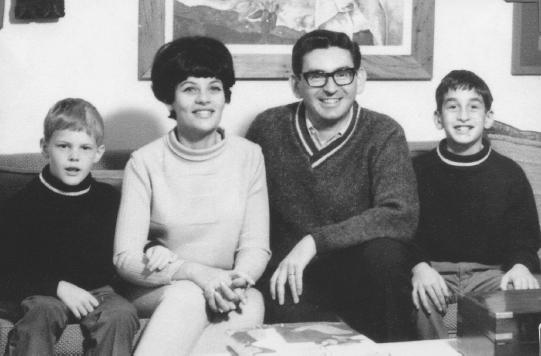
Eli Broad and Donald Kaufman started a homebuilding company in Detroit in 1957, offering homes without basements and with mortgage payments less than the rent for a two-bedroom apartment.
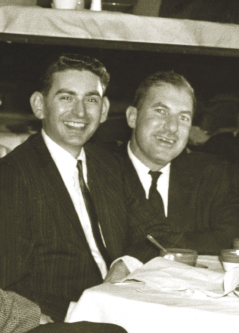
Eli Broad celebrates a company milestone. In 1961, Kaufman and Broad Home Corporation debuted as a public company on the American Stock Exchange and in 1969 went on to become the first home-builder on the New York Stock Exchange and a Fortune 500 company, today known as KB Home.
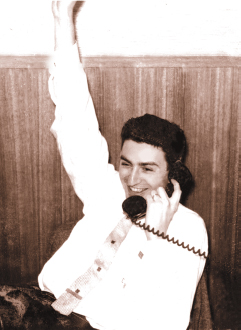
Kaufman and Broad’s model homes drew first-time homebuyers eager to become homeowners. In its first year the company sold 120 homes and generated $1.7 million in revenue.
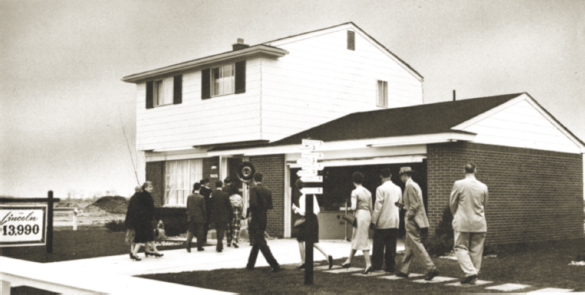
Kaufman and Broad did the unthinkable during an economic slowdown in the 1960s: They took out full-page ads guaranteeing their homes would appreciate and offering to make the mortgage payments for homebuyers who lost their jobs.

Workers in Los Angeles produce an assembly line of walls that will be trucked to a homebuilding site and erected by crane.

Eli Broad transformed a traditional insurance company into the retirement savings powerhouse SunAmerica. The company was the best-performing stock on the New York Stock Exchange for nearly a decade. A $10,000 investment in Kaufman and Broad when it went public in 1961, including the shares of SunAmerica received in the spinoff, would have been worth $34.1 million when the company merged with AIG.
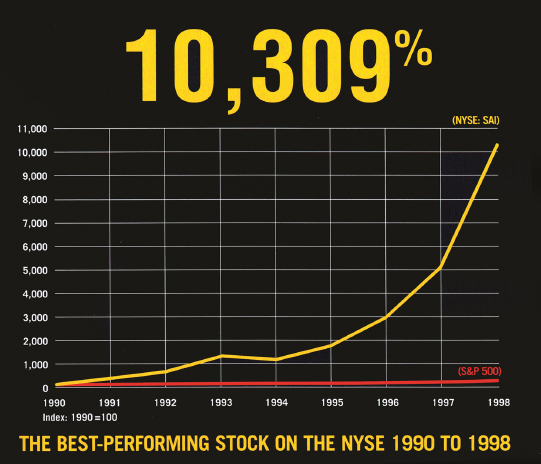
Eli Broad was the founding chairman of the Museum of Contemporary of Art, created in 1979 by aggregating developer fees for public art to build the city’s first contemporary art institution.
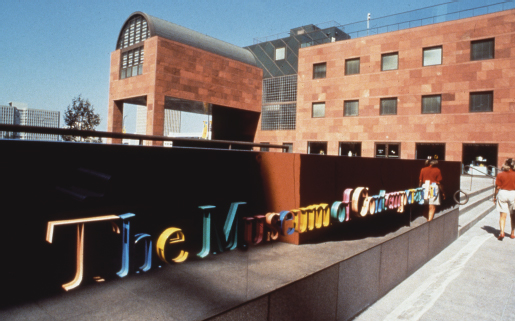
In one day Eli Broad negotiated the purchase of Count Giuseppe Panza di Biumo’s remarkable collection of postwar American art for the Museum of Contemporary of Art, giving the new museum a permanent collection. Broad and Panza are pictured here with their wives.
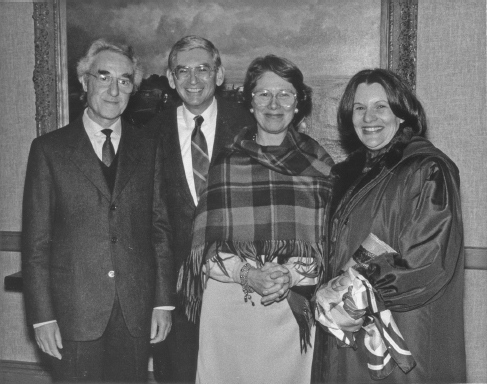
Robert Rauschenberg and Roy Lichtenstein are two of the artists featured in-depth in the Broad Collections.
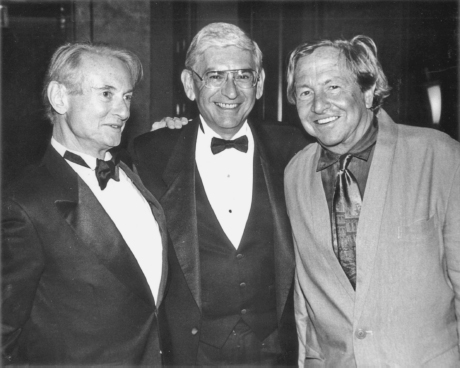
Sculptor Richard Serra with Eli and Edye Broad and Joanne Heyler, director and chief curator of The Broad Art Foundation, after the installation of No Problem at the Broads’ home.
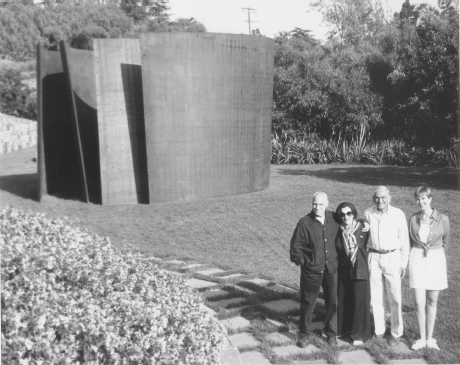
The Frank Gehry–designed Walt Disney Concert Hall has become an iconic symbol of Los Angeles.
Source: Tom Bonner
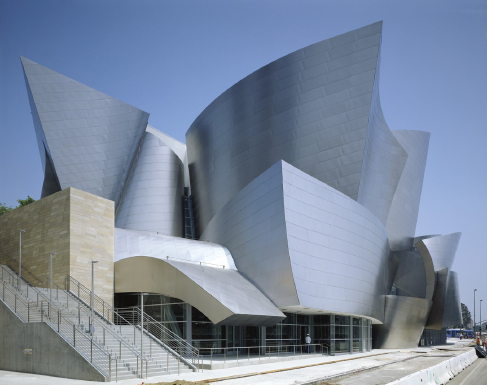
Eli Broad celebrates the 2003 opening of Walt Disney Concert Hall with Los Angeles County Supervisor Zev Yaroslavsky, architect Frank Gehry, and campaign cochairs Andrea Van de Kamp and Los Angeles Mayor Richard Riordan.
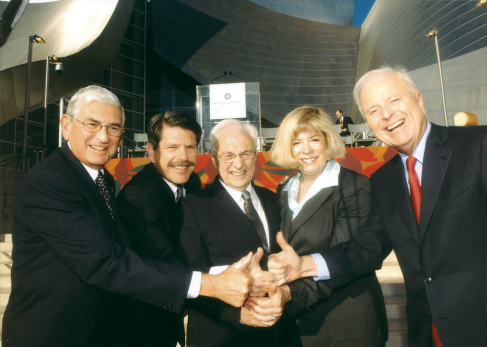
Eli Broad led the successful campaign to bring the 2000 Democratic National Convention to Los Angeles. He shares the victory with Los Angeles Mayor Richard Riordan and California Governor Gray Davis.
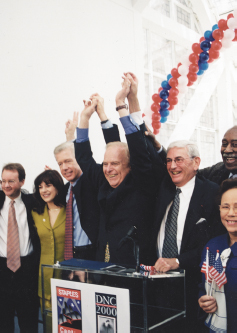
Eli Broad and Los Angeles Mayor Antonio Villaraigosa discuss plans for the Grand Avenue Project, a $2 billion redevelopment of the city’s downtown arts, civic, and cultural district.
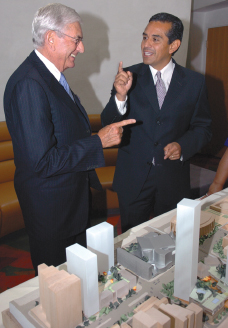
Alan Cranston asked Eli Broad to chair his U.S. Senate campaign in 1968, giving Broad his first experience in fund-raising.
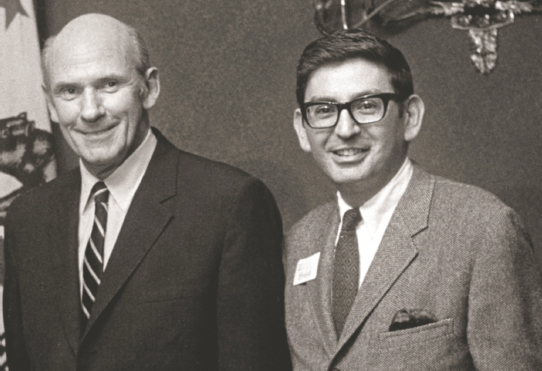
Jeff Koons has become one of Eli and Edye Broad’s dearest friends and most treasured artists in their collections. The Broad Collections have 27 works by the artist.

For the purchase of Jeff Koons’s iconic Balloon Dog, Eli Broad did something he had never done before: pay in full for a work not yet fabricated. The sculpture has been exhibited at museums including the Los Angeles County Museum of Art; the Museum of Fine Arts, Boston; the Guggenheim in Bilbao, Spain; and the Corcoran Gallery of Art in Washington, D.C.
Source: Jeff Koons, Balloon Dog (Blue), 1994–2000, high chromium stainless steel with transparent color coating, 121 × 143 × 45 inches, © Jeff Koons. Installation view of Jeff Koons’s Balloon Dog (Blue), 1994–2001, at the Museum of Fine Arts, Boston. Collection of The Broad Art Foundation, Santa Monica, California. Photograph © 2006 Museum of Fine Arts, Boston.
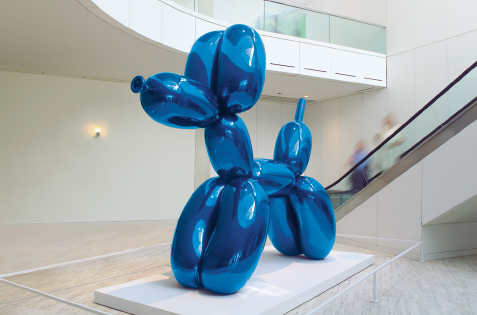
Architect Renzo Piano and Eli Broad review plans for The Broad Contemporary Art Museum at the Los Angeles County Museum of Art as curator Joanne Heyler looks on.

Eli Broad’s insistence on maximizing gallery space in The Broad Contemporary Art Museum resulted in an unconventional approach to design. By moving the stairs to the exterior of the building, Renzo Piano designed an efficient building with 90 percent of its space devoted to galleries.
Source: © Weldon Brewster
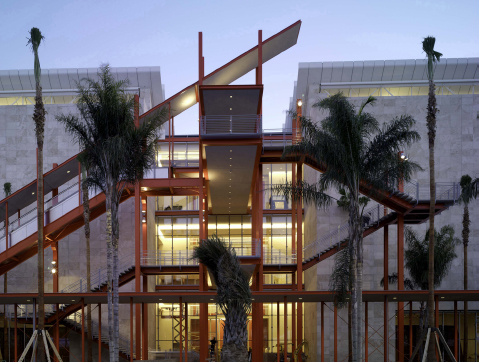
Eli and Edye Broad unveil the design for The Broad, their new museum on Grand Avenue in downtown Los Angeles.
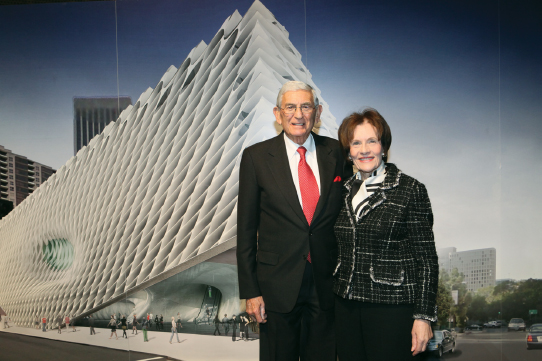
Eli Broad discusses plans for The Broad with architect Liz Diller. The new contemporary art museum and headquarters for The Broad Art Foundation will open in early 2014.
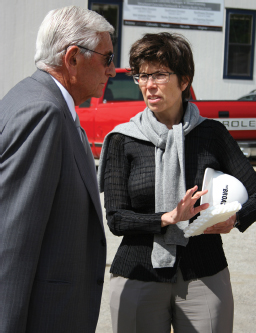
Eli and Edye Broad announce their $100 million gift to create The Broad Institute. Harvard and the Massachusetts Institute of Technology (MIT) matched the gift to become partners in the new genomic medicine institute. Pictured with the Broads are MIT President Charles M. Vest, Whitehead Institute Director Susan Lindquist, Broad Institute Director Eric Lander, and Harvard University President Larry Summers.
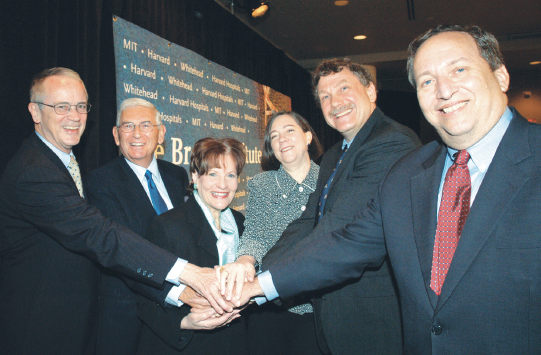
Today, The Broad Institute has more than 1,900 researchers and a $258 million budget. The Broads have given $600 million to the institute, which they believe will improve human health worldwide.
Source: Len Rubenstein
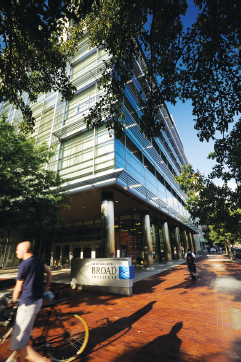
Now on his fourth career, Eli Broad believes his philanthropic work in restoring America’s public schools to international greatness is vital for a strong middle class, a healthy economy, and a vibrant democracy.
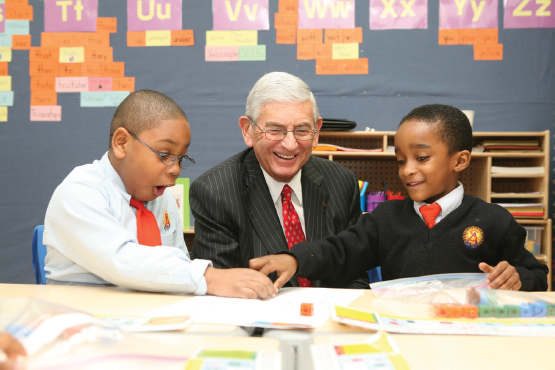
Eli Broad announces that the New York City Department of Education wins the 2007 Broad Prize for Urban Education, as U.S. Secretary of Education Margaret Spellings watches Chancellor Joel Klein celebrate with Randi Weingarten, president of the United Federation of Teachers.
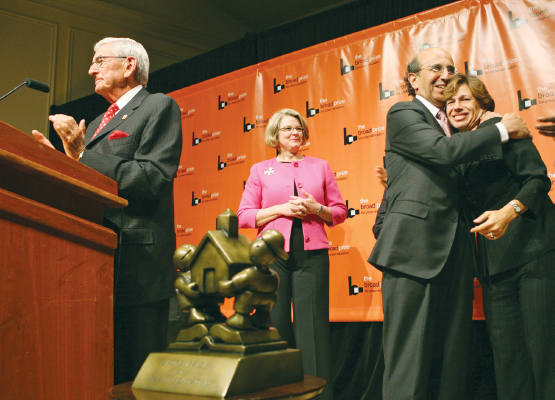
Eli and Edye Broad meet the 2007 cohort of The Broad Residency, a two-year program to infuse talented managers into K–12 public education. More than 250 Broad Residents are working in public school systems, charter management organizations, and state and federal departments of education.
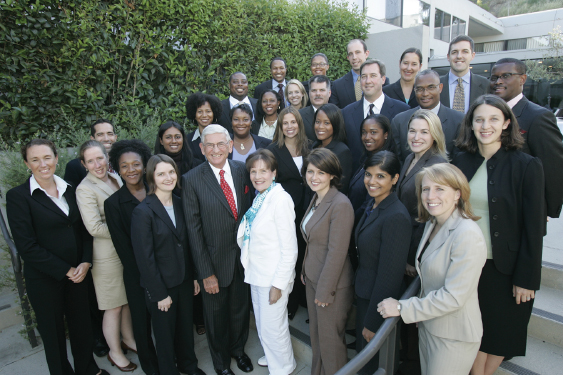
Eli Broad endowed the college of business and graduate school of management at Michigan State University, his alma mater.
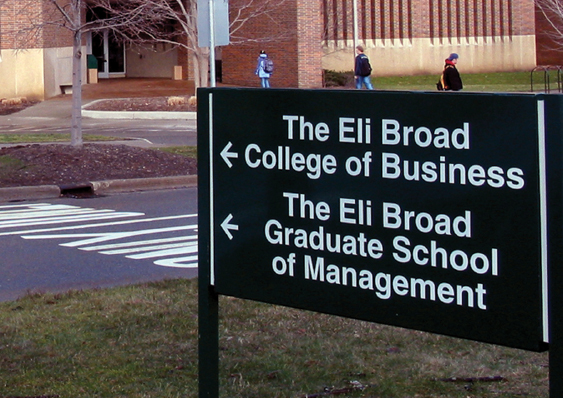
Eli Broad has been behind some of the most architecturally significant public institutions, including (starting from top left) The Broad Center for the Biological Sciences at Caltech by Pei Cobb Freed & Partners Architects, The Broad Art Center at the University of California, Los Angeles, by Richard Meier, the Caltrans District 7 Headquarters by Thom Mayne, The Broad Center of Regeneration Medicine and Stem Cell Research at the University of California, San Francisco, by Rafael Viñoly, the High School for the Visual and Performing Arts by Wolf Prix, and The Broad Art Museum at Michigan State University by Zaha Hadid.
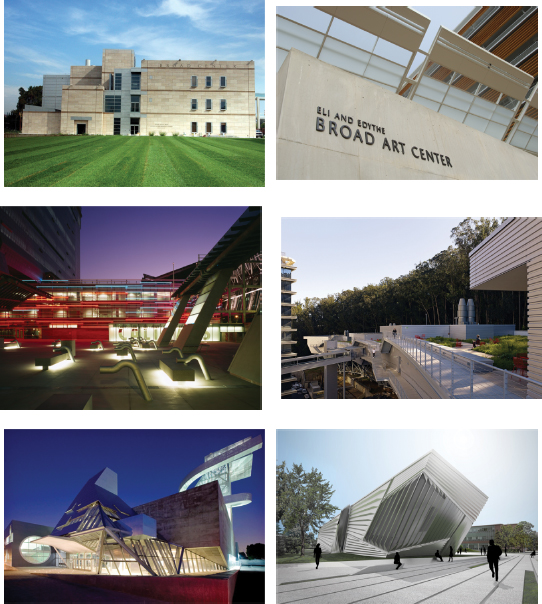
Over the course of his six-decade career in business and philanthropy, Eli Broad has met and worked with Presidents Nixon, Carter, Reagan, Clinton, Bush, and Obama.
